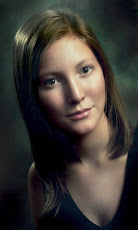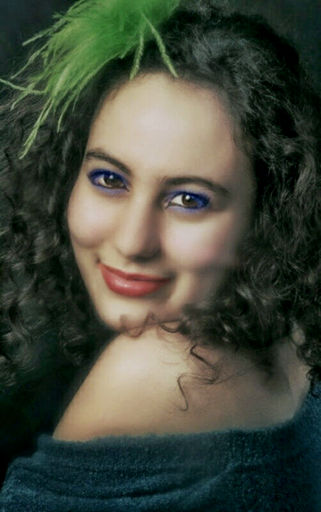Diffusion Filters for Portraits
Nov 9, 2022 09:30:26 #
BushDog
Loc: San Antonio, TX
I know the effects can be obtained with post processing but am curious about diffusion filters. Have any of you used these for portraits or other things like landscapes? And, if so, what are your thoughts?
Nov 9, 2022 09:46:51 #
I have used them in the past but found that I had better results by applying a controlled amount of diffusion in processing. I prefer my negatives and RAW files to be as sharp as possible, within reason.
--Bob
--Bob
BushDog wrote:
I know the effects can be obtained with post processing but am curious about diffusion filters. Have any of you used these for portraits or other things like landscapes? And, if so, what are your thoughts?
Nov 9, 2022 09:48:17 #
Steve DeMott
Loc: St. Louis, Missouri (Oakville area)
Interesting Topic to follow.
Can PP really duplicate all the specialty filter available?
Can PP really duplicate all the specialty filter available?
Nov 9, 2022 09:50:20 #
Simply answer, No. But this thread is about diffusion and that can be done in processing.
--Bob
--Bob
Steve DeMott wrote:
Interesting Topic to follow.
Can PP really duplicate all the specialty filter available?
Can PP really duplicate all the specialty filter available?
Nov 9, 2022 10:08:43 #
rmalarz wrote:
Simply answer, No. But this thread is about diffusion and that can be done in processing.
--Bob
--Bob
This thread is about DIFFUSION FILTERS - NOT processing......
Nov 9, 2022 10:21:44 #
BushDog before digital I applied Diffusion during B&W printing via a nylon or silk stocking stretched over an embroidery hoop. I would vary the time this fabric was in the path of the enlarger lens to attain various degrees of delusion...
I'm thinking on long exposures you could do this with digital albeit Photoshop makes this far more controllable.
Besides post processing is ubiquitous now and is widely used in commercial work. Yes there is a learning curve for Photoshop (and LR) however the benefits of mastering these applications are huge if you are shooting commercially.
Also back in the day 52mm was the primary filter size, today it's highly variable... enough said.
Hope this helps BushDog...
I'm thinking on long exposures you could do this with digital albeit Photoshop makes this far more controllable.
Besides post processing is ubiquitous now and is widely used in commercial work. Yes there is a learning curve for Photoshop (and LR) however the benefits of mastering these applications are huge if you are shooting commercially.
Also back in the day 52mm was the primary filter size, today it's highly variable... enough said.
Hope this helps BushDog...
Nov 9, 2022 10:30:35 #
Rick from NY
Loc: Sarasota FL
Before the advent of digital, most photogs relied on mechanical diffusion methods, especially when shooting a woman of a certain age. Some would apply petroleum jelly on an old filter, some would rubber band a piece of ladies’ nylon hosiery to the front of a lens, or if you could afford it, you bought a Zeiss Softar filter. Lots of companies offered similar filters using a variety of methods like concentric grooves in the glass soften the image. The Zeiss was the cream of the crop and used randomly placed “lenses within lenses”, but it was expensive.
You ask if I still use it? I’ll answer by saying I have a Zeiss 52mm Softar sitting unused on my shelf for the past 20 yrs that I’d be happy to accept offers to buy. Just PM me if you’d like to buy it. I’ll make you a good deal.😎
You ask if I still use it? I’ll answer by saying I have a Zeiss 52mm Softar sitting unused on my shelf for the past 20 yrs that I’d be happy to accept offers to buy. Just PM me if you’d like to buy it. I’ll make you a good deal.😎
Nov 9, 2022 10:32:27 #
Yes, while not a filter in the strictest sense, I also used a silk stocking stretched over a filter ring on camera and I very much liked the results. Vaseline smeared on a clear filter can also produce interesting results ....I could never afford the Zeiss Softar 8-( ......never used these for landscapes but I am glad you raised this question/possibility.
Nov 9, 2022 11:33:21 #
I won't write that I am the world's most knowledgeable guru on soft-focus portraiture but I have been intimately involved with the genre for a very long time so here the the "gospel" according to Ed.:sm04
There is absolutely nothing bad about diffusion effects or softening done in post-processing, it is just not the same as actual optical diffusion techniques done in-camera. Both basic methods are "animals" but of a different species. Years ago, in analog/film/darkroom work, diffusion during the enlarging process was inferior because this was because the shadows into the highlights thereby causing a muddy print whereas diffusion at the camera stage accomplished the opposite effect by blending the highlights into the shadows. In digital editing, this does not seem to be the case because we are starting off with a positive image
There are basically two types of diffusion filters- good ones and bad ones. The bad ones simply degrade the image and may yield an image that simply looks poorly focused or undesirably fuzzy. The best ones will somewhat simulate the effector of a prime soft focus lens which I will discuss a bit later. The premium soft focus filters are made by Zeiss and know as SOFTARS. These are made of optical plastic and appear to have tiny bubbles through the material. The effect may be difficult to explain unless you see it- is a soft image superimposed over a sharp image. That may sound weird but this has some important advantages. First of all, it works at all apertures whereas some other filters only perform well, softness-wise, at wider apertures. Most importantly, the image quality does not suffer at greater degrees of enlargement. The resulting portraits alwa retain softness but do not seem degraded. Softars come in 3 strengths.
The next best filter (IMO) first appeared as the Rolleisoft- These filters consist of optical glass with concentric circles etched in the surface. These produce a somewhat similar effect as the Softars but the softness diminishes as the lens is stopped down.
There are many othere versions and incarnations of diffusion filters- there are some with black flecks in the glass, various kinds of screens sandwiched between glass layers and more. I have tried many of them but was not impressed with the results.
The royalty of soft focus photography is PRIME soft focus lenses that are specifically designed for portraiture and other kinds of impressionistic work- landscapes, flowers, still life, etc. Someof these are vintage lenses that were mainly and originally designed for larger format film cameras. The good news is that Canon ones made a 135mm soft focus lens that will fit current Canon models. Minolta made a 100mm Soft focus lens that will fit some current models or can be adapted. The King of soft-focus prime lenses is the Rodenstock Imagon. There is a model that was intended for medium format (possibly 75mm) that can be adapted via bellows on some current digital bodies. These lenses have controllable spherical aberration that lives on the periphery of the lens so the soft effect diminished as the len is stopped. Many are in the f/4 range and become very sharp about f/8. The results are similar to or better than Stars. The Imagons utilize H- Stops- these are disks that resemble sink drain strainers with adjustable sizes holes. By opening and closing these openings, there is infinite control over the softness effect.
Mamiya made a soft focus les for its RB/RZ and 645 models that operated similarly to the Rodenstock formula.
Perhaps some of the latest mirrorless cameras can be more easily adapted to someof these older lenses.
Soft focus filters and prime lenses tend to reduce contrast so I prefer a slightly harder light source and oftentimes a greater lighing ratio to start with. If the lighting is too soft or flat the soft focus effect will not be as pronounced and the results may seem too flat as well.
Please remember, there are many other methods of diffusion, soft focus effect- etc some improvised and some store-baught. There are many old remedies such as smearing Vasoline on a filter (messy), painting the edges of a discarded skylight filter with clear nail polish to create a soft focus/vignette- (works well), a layer of black insect screen over the lens (kinda works) and all f this is a matter of taste and experimentation. My advice- stay off the petroleum jelly. Oneof my "students" put some Vicks Vapo-Rub (I suppose he liked the smell or couldn't find any Vasoline) but he managed to get it on the lens and that stuff NEVER comes off! Heis now the proud owner of a permanent soft-focus lens that smells like mothballs. Maybe it'll come off with Buckley's Mixture!
There is absolutely nothing bad about diffusion effects or softening done in post-processing, it is just not the same as actual optical diffusion techniques done in-camera. Both basic methods are "animals" but of a different species. Years ago, in analog/film/darkroom work, diffusion during the enlarging process was inferior because this was because the shadows into the highlights thereby causing a muddy print whereas diffusion at the camera stage accomplished the opposite effect by blending the highlights into the shadows. In digital editing, this does not seem to be the case because we are starting off with a positive image
There are basically two types of diffusion filters- good ones and bad ones. The bad ones simply degrade the image and may yield an image that simply looks poorly focused or undesirably fuzzy. The best ones will somewhat simulate the effector of a prime soft focus lens which I will discuss a bit later. The premium soft focus filters are made by Zeiss and know as SOFTARS. These are made of optical plastic and appear to have tiny bubbles through the material. The effect may be difficult to explain unless you see it- is a soft image superimposed over a sharp image. That may sound weird but this has some important advantages. First of all, it works at all apertures whereas some other filters only perform well, softness-wise, at wider apertures. Most importantly, the image quality does not suffer at greater degrees of enlargement. The resulting portraits alwa retain softness but do not seem degraded. Softars come in 3 strengths.
The next best filter (IMO) first appeared as the Rolleisoft- These filters consist of optical glass with concentric circles etched in the surface. These produce a somewhat similar effect as the Softars but the softness diminishes as the lens is stopped down.
There are many othere versions and incarnations of diffusion filters- there are some with black flecks in the glass, various kinds of screens sandwiched between glass layers and more. I have tried many of them but was not impressed with the results.
The royalty of soft focus photography is PRIME soft focus lenses that are specifically designed for portraiture and other kinds of impressionistic work- landscapes, flowers, still life, etc. Someof these are vintage lenses that were mainly and originally designed for larger format film cameras. The good news is that Canon ones made a 135mm soft focus lens that will fit current Canon models. Minolta made a 100mm Soft focus lens that will fit some current models or can be adapted. The King of soft-focus prime lenses is the Rodenstock Imagon. There is a model that was intended for medium format (possibly 75mm) that can be adapted via bellows on some current digital bodies. These lenses have controllable spherical aberration that lives on the periphery of the lens so the soft effect diminished as the len is stopped. Many are in the f/4 range and become very sharp about f/8. The results are similar to or better than Stars. The Imagons utilize H- Stops- these are disks that resemble sink drain strainers with adjustable sizes holes. By opening and closing these openings, there is infinite control over the softness effect.
Mamiya made a soft focus les for its RB/RZ and 645 models that operated similarly to the Rodenstock formula.
Perhaps some of the latest mirrorless cameras can be more easily adapted to someof these older lenses.
Soft focus filters and prime lenses tend to reduce contrast so I prefer a slightly harder light source and oftentimes a greater lighing ratio to start with. If the lighting is too soft or flat the soft focus effect will not be as pronounced and the results may seem too flat as well.
Please remember, there are many other methods of diffusion, soft focus effect- etc some improvised and some store-baught. There are many old remedies such as smearing Vasoline on a filter (messy), painting the edges of a discarded skylight filter with clear nail polish to create a soft focus/vignette- (works well), a layer of black insect screen over the lens (kinda works) and all f this is a matter of taste and experimentation. My advice- stay off the petroleum jelly. Oneof my "students" put some Vicks Vapo-Rub (I suppose he liked the smell or couldn't find any Vasoline) but he managed to get it on the lens and that stuff NEVER comes off! Heis now the proud owner of a permanent soft-focus lens that smells like mothballs. Maybe it'll come off with Buckley's Mixture!



Nov 9, 2022 15:36:31 #
E.L.. Shapiro wrote:
I won't write that I am the world's most knowledge... (show quote)
A beautifully shot trio of beauties 💓💙💚💜💛
Nov 9, 2022 18:35:15 #
BushDog
Loc: San Antonio, TX
Gotta love UHH! At least I do. I can always count on great competent advice .. often from many of my favorite members. Thanks guys!
Nov 10, 2022 04:17:47 #
jdubu
Loc: San Jose, CA
I don't do much portraiture, but do have the 135mm soft focus 2.8 Canon lens. It's an interesting lens that you can dial the amount of softness you want from zero to maximum on the barrel of the lens. It's an EF lens, not L, but the IQ is very good, but not like the 2.0 L.
Nov 10, 2022 05:39:54 #
BushDog wrote:
I know the effects can be obtained with post processing but am curious about diffusion filters. Have any of you used these for portraits or other things like landscapes? And, if so, what are your thoughts?
Bob said it all!!
Nov 10, 2022 07:29:44 #
billnikon
Loc: Pennsylvania/Ohio/Florida/Maui/Oregon/Vermont
BushDog wrote:
I know the effects can be obtained with post processing but am curious about diffusion filters. Have any of you used these for portraits or other things like landscapes? And, if so, what are your thoughts?
I have more control over the image in Post. With diffusion filters your usually stuck with the result and it's harder to change it in post processing.
But when I used these filters I used Tiffin. But honestly, since I got into post processing, these filters now collect dust.
Nov 10, 2022 09:24:02 #
BushDog wrote:
I know the effects can be obtained with post processing but am curious about diffusion filters. Have any of you used these for portraits or other things like landscapes? And, if so, what are your thoughts?
I know of others who used physical glass diffusion filters with film cameras many years ago. I tried one once, yuk!
 Why mess up a good film negative or slide? If I want super crisp images I would choose a slow film, Panatomic-x (ASA 32) or Kodachrome 25. If I wanted soft I would push Tri-x to ASA 800 and get larger grain or noise. Not quite the same effect as Diffusion but like I said the filters made horrible photographs in my opinion. Today I try to start with the sharpest digital image I can get with my equipment and then play with it in PP and treat it with Ps, Topaz, and Nik filters and effects IF and WHEN I so desire. No milky glass for me. Sorry. Good day.
Why mess up a good film negative or slide? If I want super crisp images I would choose a slow film, Panatomic-x (ASA 32) or Kodachrome 25. If I wanted soft I would push Tri-x to ASA 800 and get larger grain or noise. Not quite the same effect as Diffusion but like I said the filters made horrible photographs in my opinion. Today I try to start with the sharpest digital image I can get with my equipment and then play with it in PP and treat it with Ps, Topaz, and Nik filters and effects IF and WHEN I so desire. No milky glass for me. Sorry. Good day. 


If you want to reply, then register here. Registration is free and your account is created instantly, so you can post right away.






